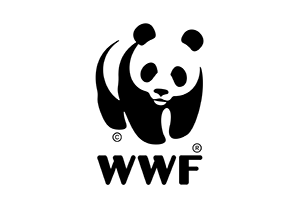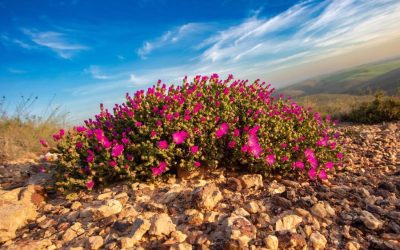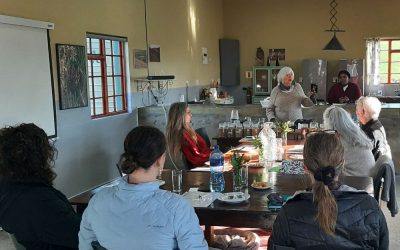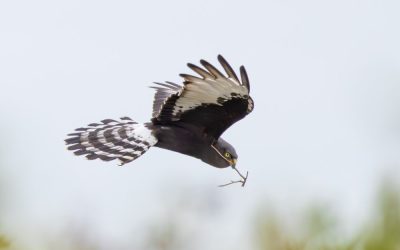OVERBERG RENOSTERVELD TRUST Home About Vision & Mission Our Role Our Team Sponsors & Partners Our Patrons & Ambassadors Annual Report 2024 Gallery What we do Renosterveld – the Story...
OVERBERG RENOSTERVELD TRUST
By Grant Forbes
Renosterveld, like fynbos, is a fire-adapted ecosystem – but one with its own distinct rhythms and responses. A 2024 study by Curtis et al. highlights that many renosterveld species respond positively to fire, with some flowering only in the first season post-burn. These fire-linked pulses of diversity are crucial to maintain the ecological health of this rare and fragmented vegetation type.
Fire clears old growth, creates space for recruitment and resets the system – especially in areas where grazing pressure and nutrient cycling from large herbivores have been lost. Without periodic burning, renosterveld can become choked with moribund biomass, suppressing regeneration and reducing biodiversity.

But unlike fynbos, renosterveld has always depended not only on fire, but also on appropriate grazing regimes. Historically, large herds of wild herbivores moved through the landscape, cycling nutrients by converting biomass into dung and trampling vegetation – keeping the system open and dynamic, while helping to retain carbon within the soil creating similar effects to fire.
In today’s fragmented landscape, those herds are long gone. Ecological processes have been disrupted. In many areas, fire has become the only remaining tool to mimic parts of this natural cycle. It must be used carefully, at the right time and under the right conditions, to maintain biodiversity and ecosystem function.
That’s why an ecological burn on our Haarwegskloof Renosterveld Reserve in April was such an important moment – bringing fire back into the system in a deliberate, controlled way, as part of a broader commitment to restoring the natural dynamics of renosterveld.

Timing is everything
Planning a renosterveld burn is never just about a single day. It takes considerable planning, and then a lot of waiting for the perfect day. We monitored weather forecasts daily, searching for the right combination of conditions: not too hot, not too windy, and dry enough to allow the fire to carry. All of this had to line up with available crew, permits and equipment – a logistical puzzle that can be a little nerve-wracking.
Our ideal burn window typically stretches from mid-February to early April – after the peak summer heat but before the autumn rains bring germination of bulbs and annuals. After two possible windows in March, we finally got our window: moderate temperatures (23°C), a light south-easterly breeze around 20 km/h, and midday humidity low enough for clean burning in early April. Cooler conditions returned by late afternoon, helping to bring the fire to a safe close. Any later into April, and we would risk disturbing the onset of autumn growth.


A carefully managed burn
Before the fire was ignited, a significant amount of preparation had gone into ensuring its safety and success. Firebreaks were cleared, permits were secured through the Greater Overberg Fire Protection Association (goFPA), and fire crews and resources were confirmed. On burn day, the ORT team and the Incident Commander gathered the crew for a thorough briefing.
The right equipment had been prepared in advance: firefighting units, additional water supplied by our neighbours, radios and beaters were all tested and ready. It had been a meticulous process, where every small detail contributed to what would become a smooth and controlled burn. Top of the list was keeping our neighbours in the loop – both when we applied for the burn and when the ignition was set to happen.
When the conditions finally aligned, our partners stepped into action. The Fynbos Trust, Nuwejaars Wetlands Special Management Area (NWSMA), Enviro Wildfire, goFPA, Working on Fire, and the Overberg District Municipality’s Fire Department all worked seamlessly with us. The Incident Commander operated like a conductor – guiding the team while every person on the line played their role. We began by igniting safe areas, slowly and deliberately, allowing the fire to establish itself within a secure perimeter. Once conditions inside the block were confirmed safe, the fire carried beautifully – cool, steady and well-behaved. It was exactly the kind of burn we had hoped for. And with good winter rains, it will be the perfect spark to reinvigorate the veld.





Post-burn reflections
Once the smoke had cleared, we walked the block to assess the impacts of the burn. Most of the area had experienced a moderately cool burn, ideal for ecological recovery. Pockets of unburnt vegetation and largely untouched ravines provided essential refuges for insects, reptiles and small mammals, while the rest of the veld was cleared of old growth, making space for new life to emerge.
We also assessed the area in the weeks following the fire, and already the signs of renewal are everywhere. Grasses are resprouting, and we’ve seen the first autumn-flowering bulbs begin to push through the ash. These early moments of recovery are only the beginning. Over the coming months and years, we’ll monitor the block closely: looking for flushes of flowering bulbs, a surge in new grass cover and shifts in species composition as the ecosystem resets and rebalances itself. We’ll also address any threats that may pop up, clearing alien invasive plants.



Thank you to our partners
This burn was made possible through the generous support and collaboration of a wide network of dedicated partners, each playing a vital role in its success. The Overberg District Fire Department supported the implementation during the optimal burn window – despite the inherent risks that come with this timing – and provided essential fire management resources through Working on Fire. The goFPA guided us through the burn application and permitting process and supported implementation on the day.
Just as crucial was the involvement of our conservation partners: the Fynbos Trust, Enviro Wildfire, and the NWSMA, who all contributed directly to the planning and execution of the burn. Neighbouring landowners supported the implementation of the burn and, in some cases, provided vital water resources, underscoring the importance of local collaboration. And our own ORT staff brought energy and commitment to every stage of planning and implementation.
From initial coordination to final mop-up, it was a true team effort – showcasing the power of partnership in bringing fire back into renosterveld safely, and with purpose.
A FINAL NOTE: We’ll share more stories as Haarwegskloof greens up, and life continues to return to the veld. Be sure to follow our social media for more.
Images: Grant Forbes and Odette Curtis-Scott
Latest Renosterveld News
A weekend of fire and spice: Our first retreat at Haarwegskloof
The first Wild & Wise Retreat at Haarwegskloof Renosterveld Reserve unfolded under a soft winter sun during a June weekend.
Critical renosterveld site acquired by the ORT – a breeding hotspot for Endangered Black Harriers
In the heart of South Africa’s Overberg, a stretch of Endangered Eastern Rûens Shale Renosterveld is now under conservation protection.
What we do
ORT © 2012 – 2025 | Trust no IT851/2012 • PBO no 930039578 • NPO no 124-296














